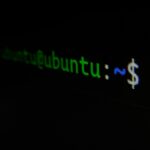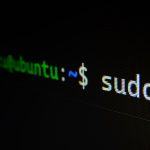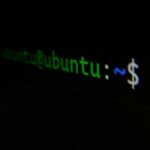Explore expert Linux tutorials, command‑line guides, and practical tips at Heatware. Master Linux commands, scripting, and open‑source tools with our in‑depth articles.
Linux Troubleshooting & Tips
LVM Snapshots vs Git for File Version Control in Linux
Logical Volume Manager (LVM) is a powerful tool for flexible storage management, making it easier to organize and control disk space. One of its most useful features is snapshots, which let you capture the exact state of your file system at a specific moment. Think of snapshots as a freeze-frame of your data, preserving everything … Read more
Linux Essentials: Comprehensive Guide to ‘ls’ Command
If you’re using Linux, mastering the ls command is essential for managing files and directories efficiently. Whether you’re a beginner learning basic Linux commands or an advanced user looking to list files in Linux with detailed information, the ls command helps you navigate the file system with ease. This command isn’t just about listing files—it’s … Read more
How to Use Rsync for Backups and File Syncing in Linux
Rsync is a powerful tool for file synchronization and incremental backups. It’s efficient, reliable, and works well for both small and large-scale data management. Whether you’re keeping files in sync across devices or creating backups with minimal storage use, Rsync simplifies the process. What is Rsync? Rsync, short for “remote sync,” is a command-line utility … Read more
NFS vs. Samba: Linux File Sharing Explained
Linux file sharing solutions make data exchange smooth and efficient. Whether you’re managing a large network or setting up a home system, knowing about Linux file sharing servers and tools is important for sysadmins. In Linux, file sharing is beyond simple transfers. It’s about creating secure, efficient, and scalable systems for diverse needs. Here’s a … Read more
Inotify and Real-Time File System Monitoring on Linux
Inotify, it the go-to solution for real-time file monitoring in Linux. Whether you’re a developer or a system admin, Inotify automates responses to file changes, ensuring smooth operations. From setting up automated tracking to boosting security, Inotify is your reliable tool. For those new to Linux, learning how to run script at startup automatically in … Read more
Comprehensive Guide to the ‘cp’ and ‘mv’ Linux Commands
Whether you’re an experienced sysadmin or just beginning, understanding file management in Linux can significantly enhance your experience. Working with files in Linux means organizing, accessing, and modifying data directly from the command line. Although it might seem challenging initially, its flexibility is unparalleled. This article will teach you about the command line tools: cp … Read more
Exploring Linux ACLs: From Basics to Best Practices
When you’re managing Linux systems, file permissions are critical for maintaining security. Yet, the standard permissions scheme sometimes falls short. This is where Linux file access control lists, or ACLs, come into play. They allow for detailed file access control, extending beyond the usual owner/group/others model. Why Use ACLs? Imagine needing multiple teams to access … Read more
Linux File Protection: ‘lsattr’ and ‘chattr’ Detailed Guide
Exploring Linux? You already know how critical file security can be. By using extended attributes and immutable flags, you can take more control over who accesses and modifies your files, adding an extra layer of protection to your system. Extended Attributes in Linux: Strengthening File Security Extended attributes are like extra tags attached to a … Read more
Using ‘xargs’ and GNU Parallel for Bulk File Operations
Handling thousands of files simultaneously can be daunting, but efficient file operations optimize your workflow and conserve resources. Tools like xargs and GNU parallel revolutionize bulk data processing by enabling parallel file processing, letting you manage multiple files at once. This speeds up tasks and enhances overall command line efficiency. xargs vs GNU parallel Compared … Read more
Repair Linux File Systems Using `fsck` Command: HOWTO Guide
File systems like NTFS and EXT4 are the foundation for Linux data management and retrieval. However, file system corruption can severely disrupt operations and make data recovery challenging. So, what is file system corruption, what causes it, and how can you spot it early? Causes of File System Corruption File system corruption can arise from … Read more
gzip Command: How to Compress & Decompress Files in Linux
In the Linux environment, file compression is essential. Whether you’re optimizing disk space on a server or enhancing data transfer efficiency, compression can significantly boost your workflow. Imagine cutting disk use in half or speeding up file transfers. That’s the power of compression! For those looking to manage large files efficiently, see how to find … Read more
Linux `Find` Command Tutorial with Examples
Boosting your Linux skills has never been easier. The find command is your secret weapon, offering more than just a search function; it’s essential for efficient file management in Linux. Whether you’re a seasoned user or just starting, unlock the advanced features of the find command to enhance your command line productivity. Why Use Advanced … Read more
How To Use the ‘head’ Command in Linux to Preview Files
The head command has long been a go-to tool for quickly inspecting the start of a file in Linux. Here in 2025, its usefulness hasn’t diminished—if anything, it’s only become more important for large-scale data analysis and server administration. Whether you’re dealing with massive logs, configuration files, or script outputs, head allows you to preview … Read more
How to Run Script at Startup Automatically in Linux
Running scripts automatically at startup can streamline tasks like launching applications, managing services, or performing system maintenance. This guide provides step-by-step instructions for setting up startup scripts on Ubuntu, CentOS, and Debian. Why Run Scripts at Startup on Linux? Automating scripts to execute during system startup can: Different Linux distributions provide various ways to execute … Read more
The Ultimate Linux Guide for System Admins and Users
Linux is known for being reliable, secure, and adaptable, making it a favorite for tech enthusiasts, developers, and system administrators alike. Whether you’re managing servers, building software, or just diving into open-source tools, Linux gives you the control and flexibility to get things done. This guide pulls together all the essentials—commands, tips, and troubleshooting—to make … Read more
dd Command Tutorial for Linux: Examples & Best Practices
The dd command is one of the most powerful tools in the Linux command line arsenal. Designed for data copying and conversion, it’s a go-to utility for system administrators and advanced users working on Unix-like systems. Whether you’re creating disk backups, duplicating partitions, or performing low-level data operations, mastering the dd command can save time … Read more
The Best Linux Distro for Dell Latitude Laptops
Picking the best Linux distro for a Dell Latitude can make a big difference in performance, compatibility, and overall user experience. Some distributions work better with Latitude hardware than others, so choosing the right one can save you time and headaches. This guide breaks down the best options based on hardware support, speed, and ease … Read more
Ultimate Guide to Installing Linux on Your Chromebook
Installing Linux on a Chromebook can significantly enhance its functionality, moving beyond the basic capabilities of Chrome OS. This transformation allows users to access a broader range of software applications, including those required for programming, graphic design, and much more. By leveraging the power of Linux, Chromebook users can turn their devices into versatile machines … Read more
Top 5 Ways to Fix “No Space Left on Device” Error in Linux
Encountering the “No Space Left on Device” error in Linux can be perplexing, especially when a glance at your disk storage suggests ample space. This discrepancy between expected and actual storage availability is a common stumbling block for many users. Understanding the root causes of this error is crucial for effective troubleshooting. This article dives … Read more
How to Check Which GPU Is Being Used on Linux with 1 Command
In Linux computing, understanding which Graphics Processing Unit (GPU) is currently active is crucial for optimizing performance and resource allocation. Whether you’re a gamer seeking the best graphics experience, a graphic designer in need of precise rendering capabilities, or a researcher conducting computational analyses, knowing how to check which GPU is being used can significantly … Read more
Beginner’s Guide to Running Bash Scripts on Linux: Tips and Tricks
Running a Bash script simplifies system tasks and makes automation faster. This guide explains script permissions, execution, passing arguments, and troubleshooting so you can confidently work with Bash scripts. Setting Up Your Environment Understanding Bash Scripts Bash scripts are text files containing a series of commands to be executed by the Bash shell. They serve … Read more
The Ultimate Guide to GPU Overclocking on Linux
Overclocking a GPU on Linux can significantly enhance system performance, making it a sought-after technique among Linux users. This process involves increasing the clock rate of your GPU beyond the manufacturer’s settings to boost computational power for tasks such as gaming, rendering, and data processing. In this article, we will explore various tools and methods … Read more
Step-by-Step Tutorial: How to Write a Bash Script
Ever wonder how Linux pros automate so many of their tasks? The secret is Bash scripting. Bash (short for Bourne Again Shell) is the default shell in most Linux systems, and it’s an awesome tool for creating scripts to handle repetitive tasks. Whether it’s automating backups or simplifying system management, Bash scripting is the go-to … Read more
How to Check a GPU on Linux and Perform Real-Time Monitoring
In Linux computing, understanding your system’s Graphics Processing Unit (GPU) specifications is crucial for optimizing performance, especially in gaming and professional applications that demand high graphical processing power. Whether you’re troubleshooting, monitoring performance, or simply curious about your system’s capabilities, knowing how to check GPU on Linux can provide valuable insights. Linux supports a wide … Read more
Linux Essentials – How to Use BASH ‘exit’ Command
Bash (Bourne Again Shell) is a key part of Linux and other Unix-based systems. It offers a powerful way to run commands and automate tasks. Knowing how to exit Bash properly is essential for managing sessions, improving workflow, and avoiding system issues. This guide covers different ways to exit Bash, including useful commands, keyboard shortcuts, … Read more























